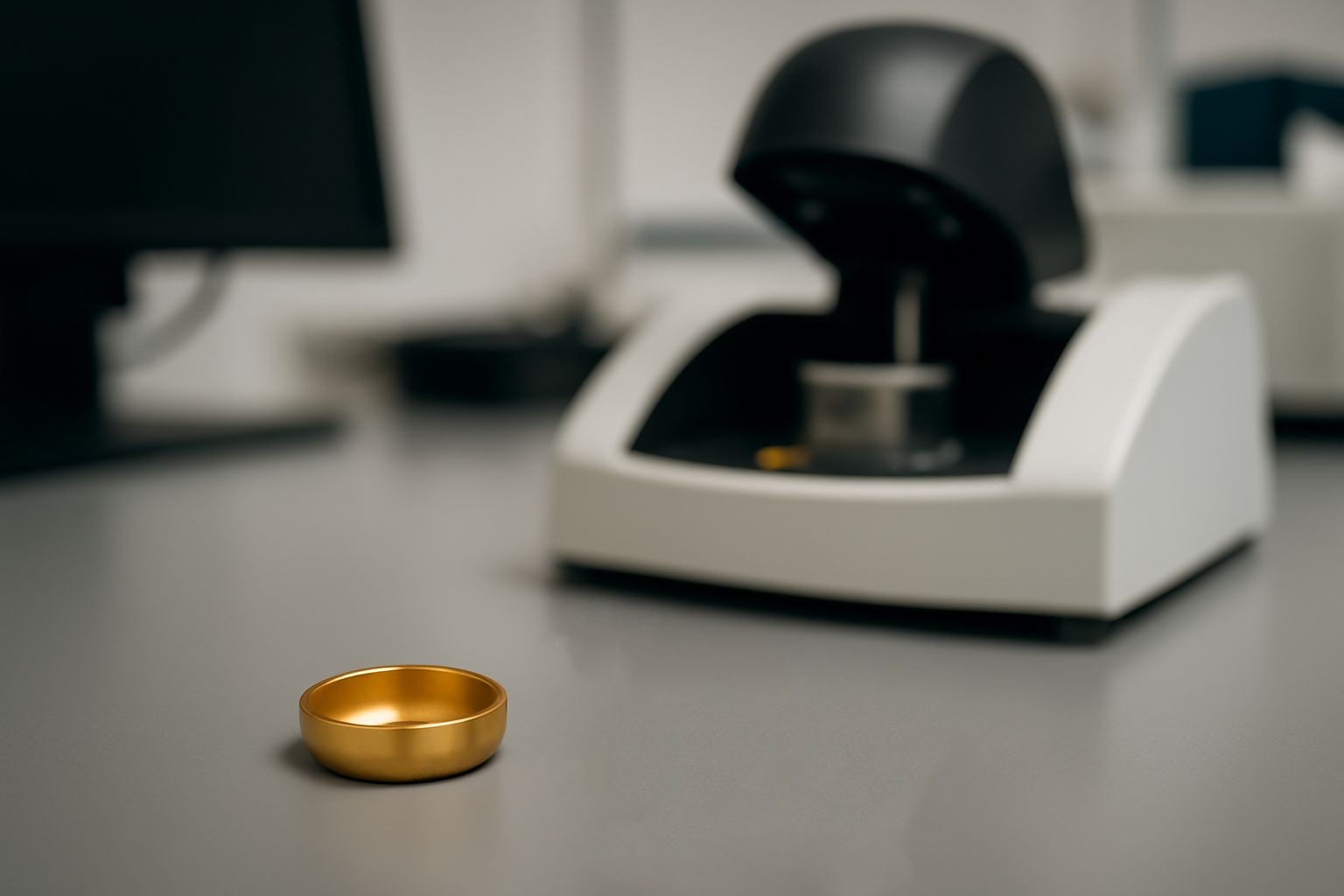Your cart is empty.
shop now
Your cart is empty.
shop now
Laboratory testing can stall when accessories hold you back. Get ahead by choosing tools that guarantee results, not frustration.
Selecting optimal thermal analysis accessories for your lab boosts data accuracy and reduces downtime. This means more reliable results for DSC and TGA tests every day.

The world of thermal analysis runs on precision. I learned early that the difference between a smooth workflow and costly repeat tests is often in the accessories. Let’s unpack the strategies that have helped me and many others keep tests on track and results you can trust. Read on—your next lab breakthrough could start here.
Many labs lose hours and money using mismatched or worn accessories. This leaves room for error and unreliable data.
The best accessories for DSC and TGA are high-purity sample pans, tightly sealing crucibles, and instrument-specific holders that match your analysis needs.
Choosing the right accessories improves both the accuracy and efficiency of your thermal analysis. For differential scanning calorimetry (DSC) and thermogravimetric analysis (TGA), I focus on the compatibility with manufacturer systems. Accessories like aluminum pans, platinum crucibles, and vented lids provide essential support. I consider their chemical resistance, temperature range, and fit for the specific instrument. The accessory’s purity (purity definition) matters because impurities can alter sample reactions and affect data. Here’s how the most common choices stack up:
| Accessory | Main Function | Key Spec | Compatible Brand |
|---|---|---|---|
| Aluminum DSC Pans | Hold samples for temperature control | 99.99% purity, 30-50 μl volume | TA, PerkinElmer, NETZSCH |
| Platinum Crucibles | High-temp stability for TGA | Up to 1600℃, seamless edges | METTLER, SHIMADZU |
| Sealing O-rings & Lids | Seal volatile or sensitive samples | Resists chemicals, precise fit | LINSEIS, SETARAM |
| Sample Holders | Align pans & crucibles in device | Exact tolerances, anti-corrosive | Universal |
When planning purchasing decisions, I always match accessories against the required laboratory equipment specifications to keep everything running smoothly (source).
Lab schedules can slip when accessory changes don’t keep pace with evolving test demands. Many overlook simple upgrades that can make a big difference.
Upgrade your lab’s efficiency by using fast-exchange sample trays, dedicated cleaning tools, and smart storage containers tailored to your sample types.
In my experience, switching to modular accessories is the fastest path to saving time in sample preparation and analysis. Quick-change pans and removable holders let you set up more tests with fewer interruptions. I also recommend investing in anti-static tools and lint-free wipes, which protect sensitive weighing steps from error. Well-organized storage is key; I sort crucibles and lids by size and material, then label everything for easy picking. Here’s a breakdown of tools that have improved my workflow:
| Upgrade Tool | Main Efficiency Gain | Typical Lab Scenario |
|---|---|---|
| Quick-Change Sample Trays | Reduces test setup time | Batch testing different samples quickly |
| Anti-Static Brushes | Prevents sample loss | Handling powder material for TGA |
| Lint-Free Wipes | Keeps surfaces clean | Preparing DSC pans for sealing |
| Labeled Storage Boxes | Prevents mixing up accessories | Large multi-user laboratories |
Research from laboratory management studies shows that structured layouts and clean procedures help labs run more consistently (source).
When lab data is questioned, it is often due to overlooked details in sample handling and preparation, not just the instrument itself.
Accessories like custom pans, micro-volume sets, and high-pressure cups widen the types of samples and tests your lab can run with confidence.
I see labs gain an edge by adopting accessories matched to new testing challenges, such as volatile sample analysis or microgram-level measurement. Using high-pressure or vented sample pans, for example, makes safe volatile testing possible. Micro-volume accessories mean even expensive or rare compounds get tested efficiently. Specialty pans, such as those with gold plating, can reduce sample adhesion and improve repeatability for sensitive analyses. Here is how several enhancements support advanced testing:
| Advanced Accessory | Test Advantage | Typical Sample Type |
|---|---|---|
| Custom Machined Pans | Optimized for unique shapes/sizes | Pharma, polymers, unknown materials |
| Micro-Volume Sets | Works with limited sample sizes | Research, high-cost reference tests |
| High-Pressure Crucibles | Withstands runaway reactions | Explosives, unknown chemistry samples |
| Gold-Coated Pans | Improves repeatability | Adhesive or sticky organics |
Greater flexibility and new test types mean your lab is ready for evolving science without major equipment investments (source).
Poor-quality accessories are a common cause of unpredictable test results and extra troubleshooting steps.
Switching to high-quality accessories reduces repeat tests and boosts your lab’s productivity by improving reliability and test consistency.
Over time, I’ve seen the gap first-hand: low-grade pans deform at high temperatures, or poorly fitted lids let samples leak. This forces lab teams to do tests again, wasting time and materials. By choosing accessories made to strict tolerance, the risk of test failure drops. Premium accessories also mean less cleaning, easier data review, and longer service life. This is the clear difference:
| Accessory Quality Level | Lab Result Consistency | Operational Downtime | Long-Term Cost Impact |
|---|---|---|---|
| High-Quality (Premium) | Highly repeatable, predictable | Minimal | Saves money over time |
| Standard/Generic | Occasional drift | Moderate (more cleaning/adjustment) | Neutral |
| Low-Quality | Frequent variation, risk of failed tests | High (frequent re-testing) | Higher cost due to errors |
This difference is supported by controlled studies from organizations like the National Institute of Standards and Technology, which highlight the link between accessory quality and test reproducibility (source: NIST, 2021).